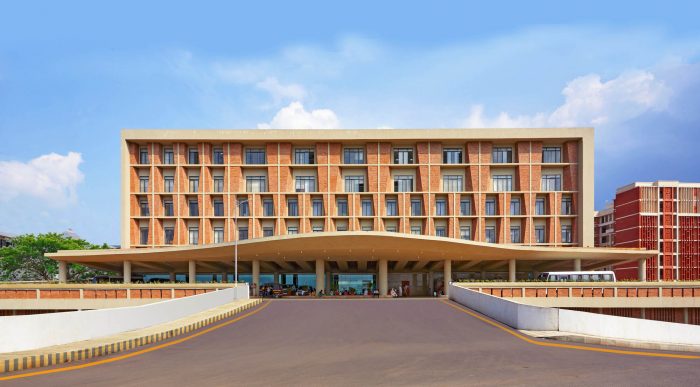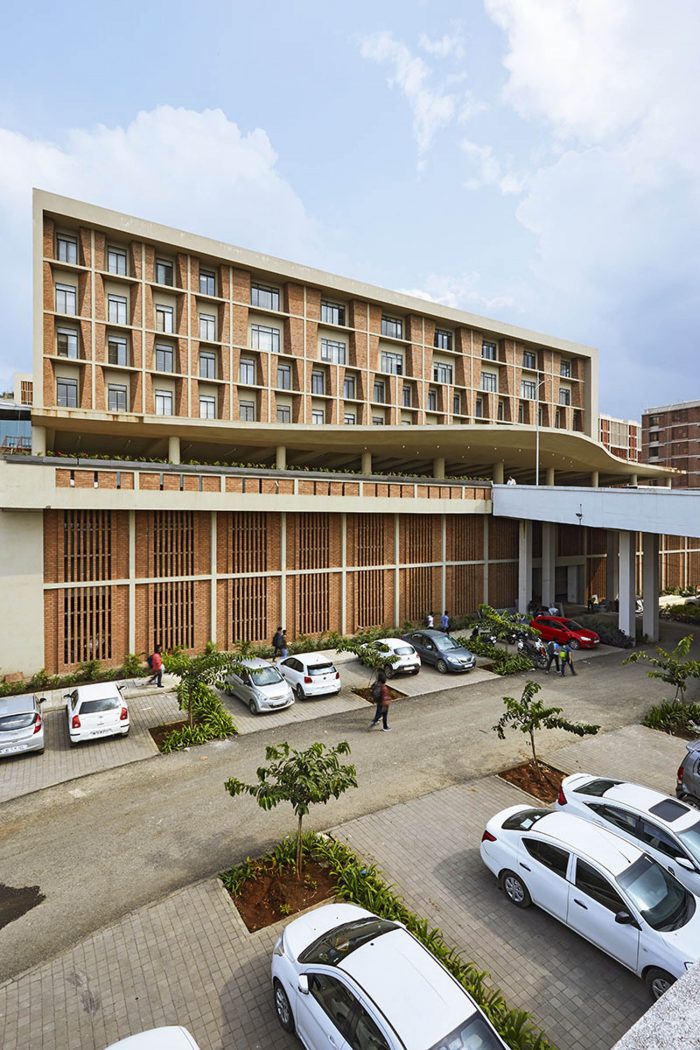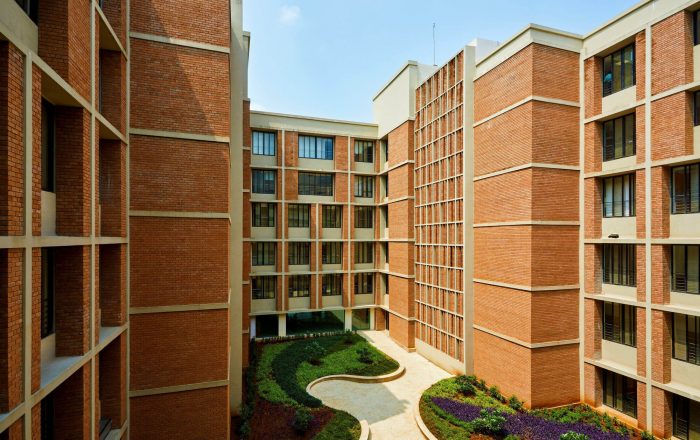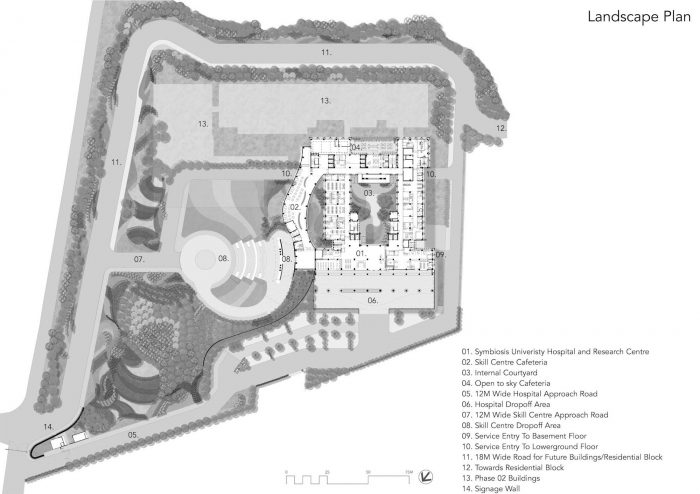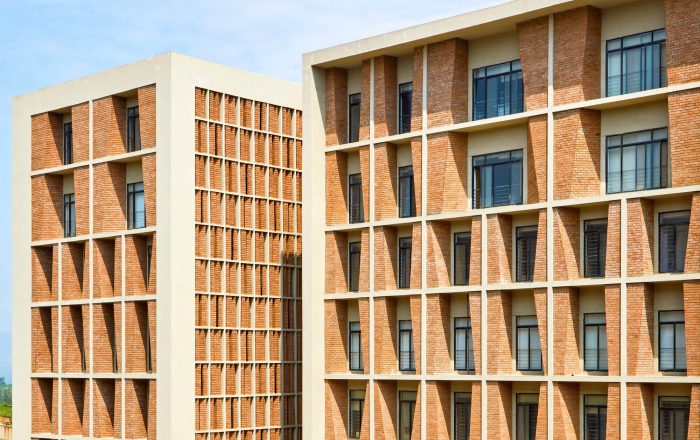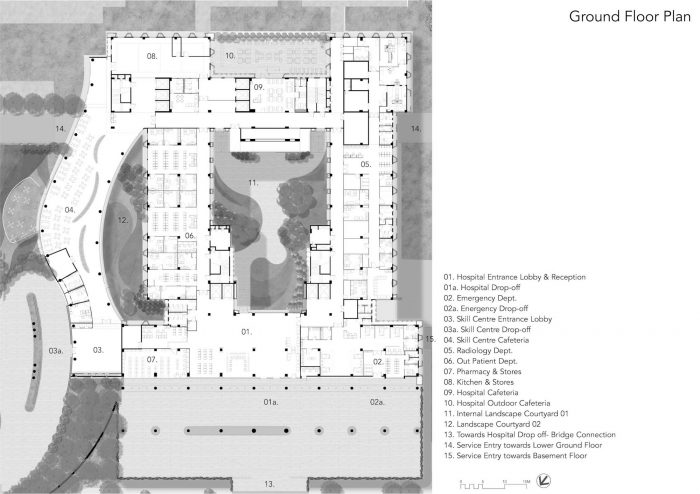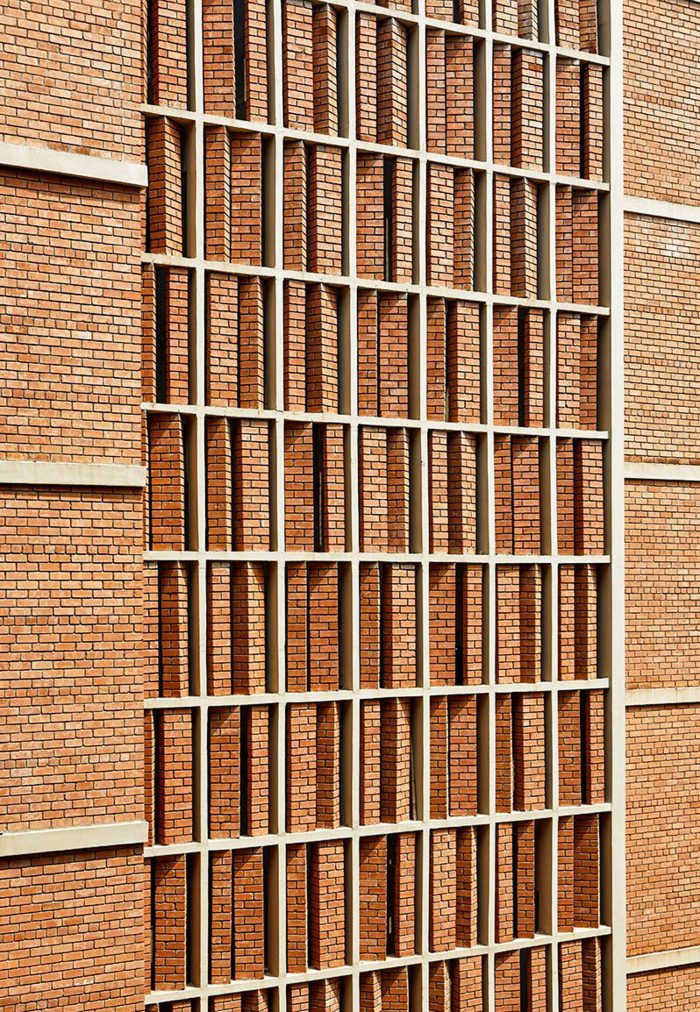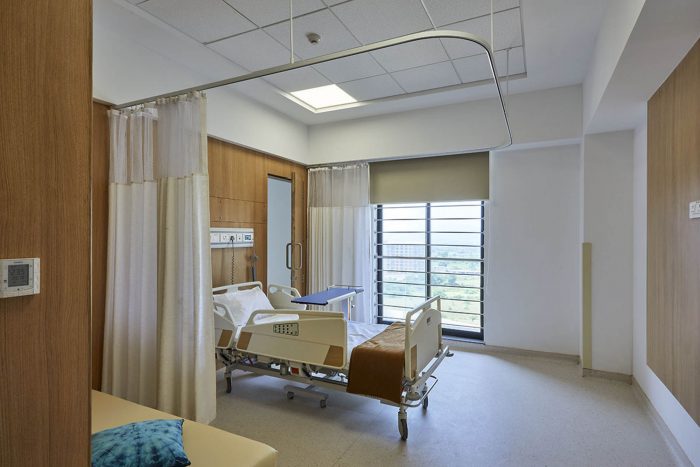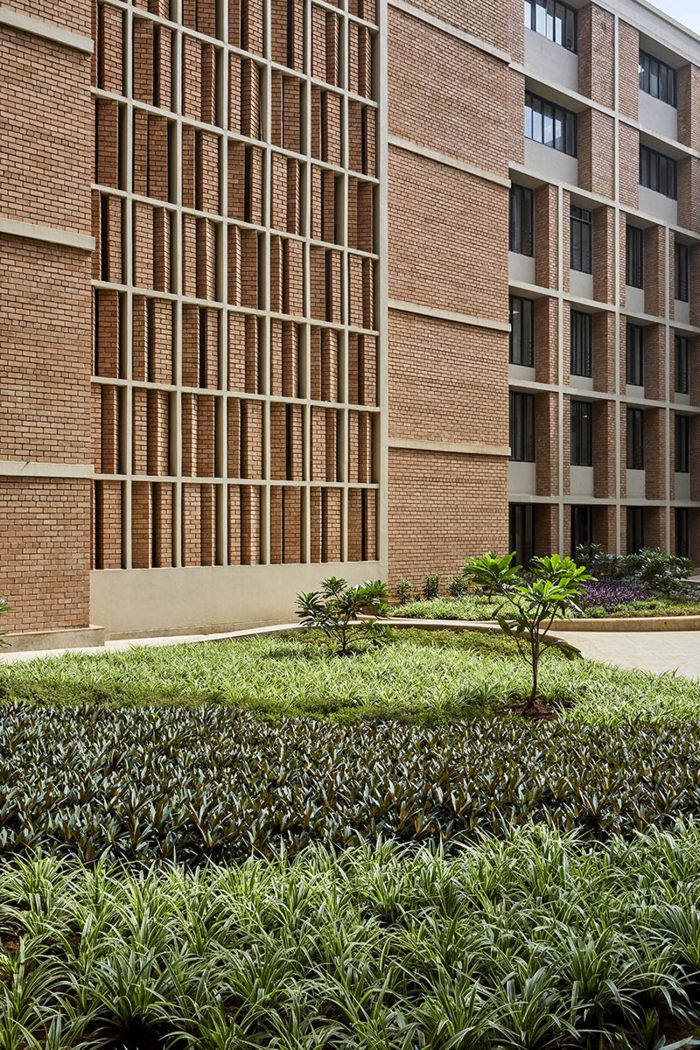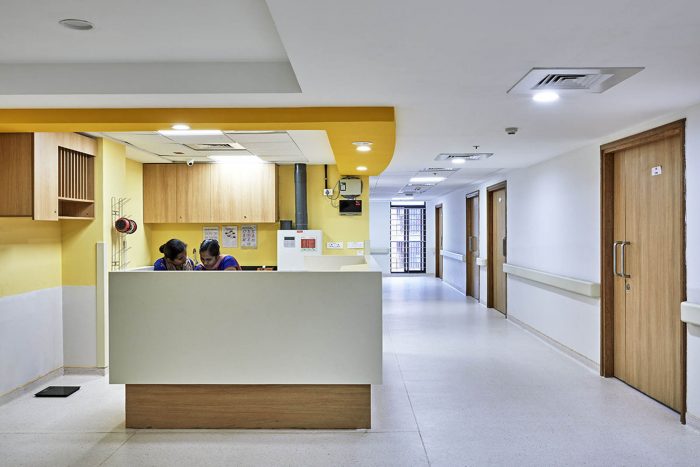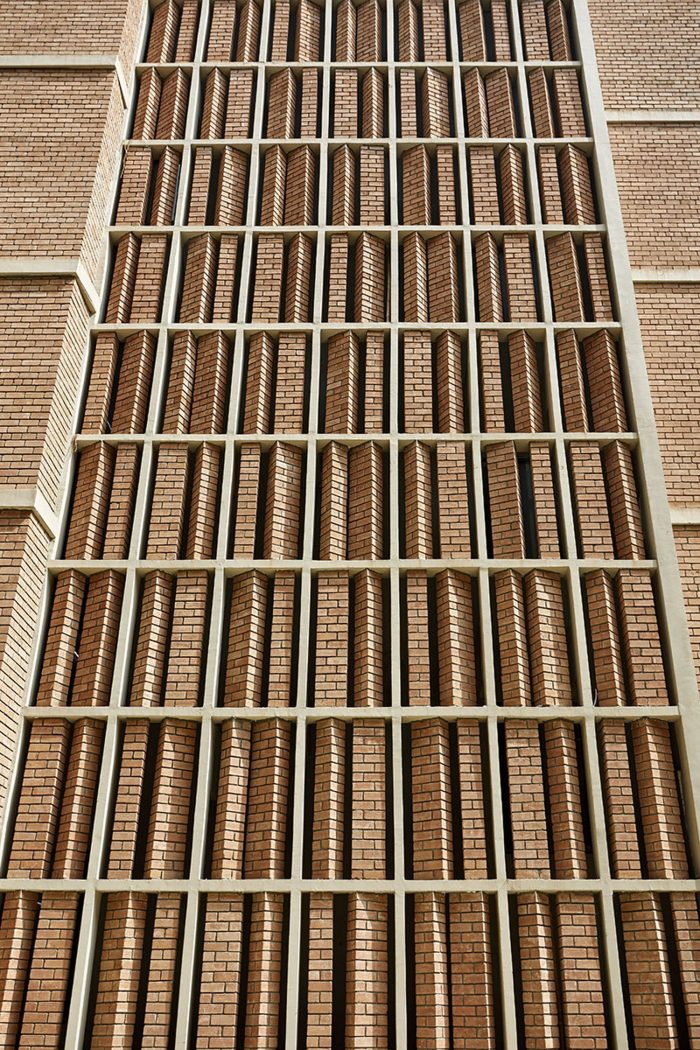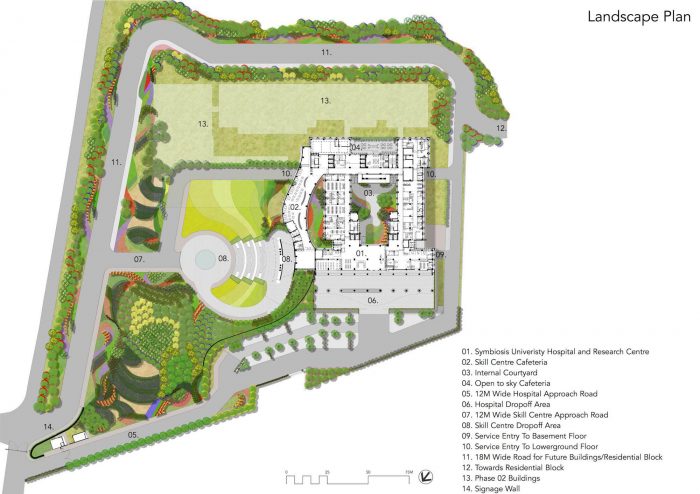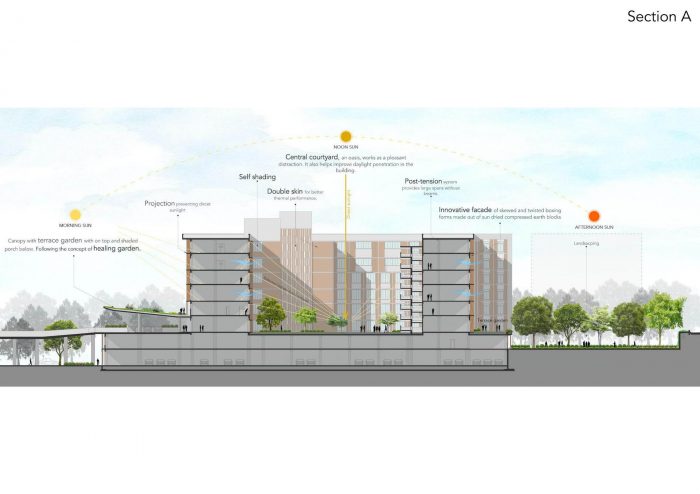Symbiosis大学医院和研究中心(SUHRC)位于Lavale的Symbiosis国际大学260英亩土地的山坡下,占地41800平方米,拥有216张床位的多科医院,代表了印度医疗基础设施的新面貌和进步性。它拥有最先进的医疗设施和一个研究中心,以加强技能发展,今天,它作为COVID-19的隔离和治疗设施,为马哈拉施特拉邦抗击该大流行病做出了贡献。
Occupying the lower slopes of a hill within Symbiosis International University’s 260-acre estate in Lavale, Symbiosis University Hospital and Research Centre (SUHRC) is a 41,800-square-metre, 216-bed, multi-specialty hospital that represents a new and progressive face for healthcare infrastructure in India. With its state-of-the-art healthcare facilities and a research centre to enhance skill development, it is firmly anchored today as a COVID-19 quarantine and treatment facility, contributing to Maharashtra’s fight against the pandemic.
SUHRC的设计借鉴了生物亲和力的理念(人类与生俱来的寻求与自然和其他形式的生命联系的倾向),以促进病人和医护人员的康复和恢复活力。两个用开花灌木和树木美化的大庭院将充足的日光和室外的景色引入室内,同时创造缓冲区以减少交叉感染。重症监护室等关键区域被赋予了柔和舒缓的色调,以减少焦虑;而手术室没有空调,但允许使用新鲜的自然空气–从而减少这些区域的交流负荷和电力消耗。
SUHRC’s design draws from the ideas of biophilia (an innate human tendency to seek connections with nature and other forms of life) to promote recovery and rejuvenation for patients and healthcare professionals. Two large courtyards landscaped with flowering shrubs and trees bring in ample daylight and views of the outdoors into the interiors, while creating buffer zones to reduce cross infection. Critical areas such as ICUs are endowed with soft and soothing hues to reduce anxiety; while the OPD has no air conditioning but allows for fresh, natural air – thereby reducing the AC load and power consumption for these areas.
在功能上,该建筑由四个部分组成;其中三个部分属于医院,最后一个部分是技能中心。医院的规划分为五个层次;部门如OPD、伤员、放射科、MHC等。这有助于将各部门分开,从而保持每层功能的无菌性。
Functionally, the building comprises four sections; three of them belong to the hospital and the last one being the Skill Centre. The hospital is planned across five levels; departments such as the OPD, casualty, radiology, MHC etc. This helps in keeping the departments separate, and thus maintaining the sterility of each floor function-wise.
经过精心的战略规划,该建筑试图做出宏大的姿态,但又是局部的,并注意到一些细节,如砖头艺术和暴露的混凝土。该项目是被动设计和可持续性的典范。
Carefully and strategically planned, the building attempts to make gestures that are grand, yet local and responsive with attention to details such as the brick-art and the exposed concrete. The project is an exemplar of passive design and sustainability.
自然压缩的风干土砖(CSEB)是在现场生产的,并被用来创造一个具有箱形结构的双层外墙和深层遮阳的投影,以减少热量的摄入。CSEB通过其自身的多孔性及其在空心墙和jaalis等元素中的使用,使结构能够通过允许建筑呼吸来应对该地区的气候。这减少了内部的热增益,使热舒适度最大化,减少了能源消耗。砖块是在现场使用制砖机生产的,因此为当地人提供了额外的就业机会,并确保了最低的碳排放。这是CSEB首次在如此大规模的项目中使用。
Naturally-compressed, sundried earthen bricks (CSEB) were produced on site and are used to create a double-skinned façade with boxed forms and deep shading projections to reduce heat gain. CSEB through its own porosity and its use in elements such as cavity walls and jaalis enables the structure to cope with climate of the region by allowing the building to breathe. This reduces the internal heat gain allowing for maximum thermal comfort, reducing energy consumption. The bricks were produced on site using a block-making machine, thus providing additional employment opportunities to the locals as well as ensuring minimal carbon emissions. This is the first time CSEB has been used in a project of such a large scale.
Architects: IMK Architects
Area: 449930 ft²
Year: 2020
Architects:IMK Architects
City:Lavale
Country:India


